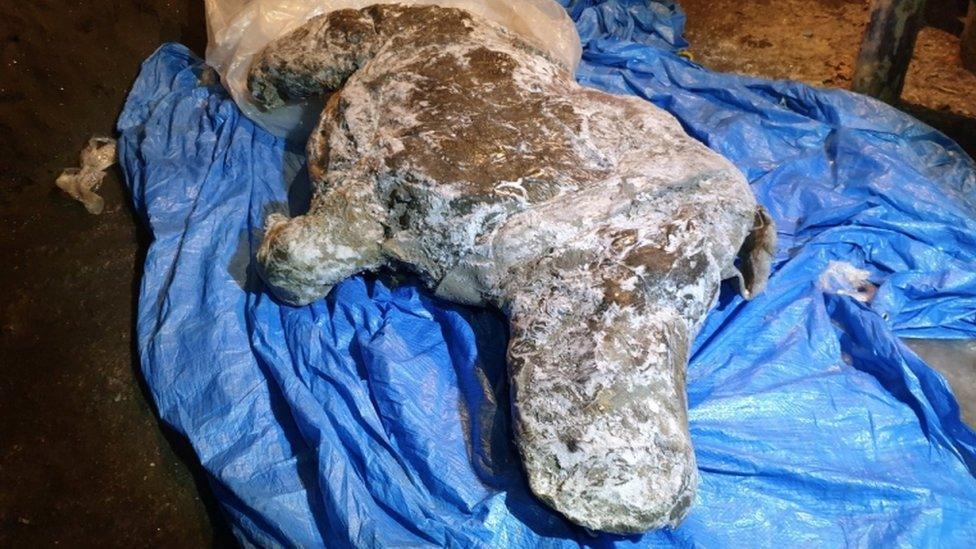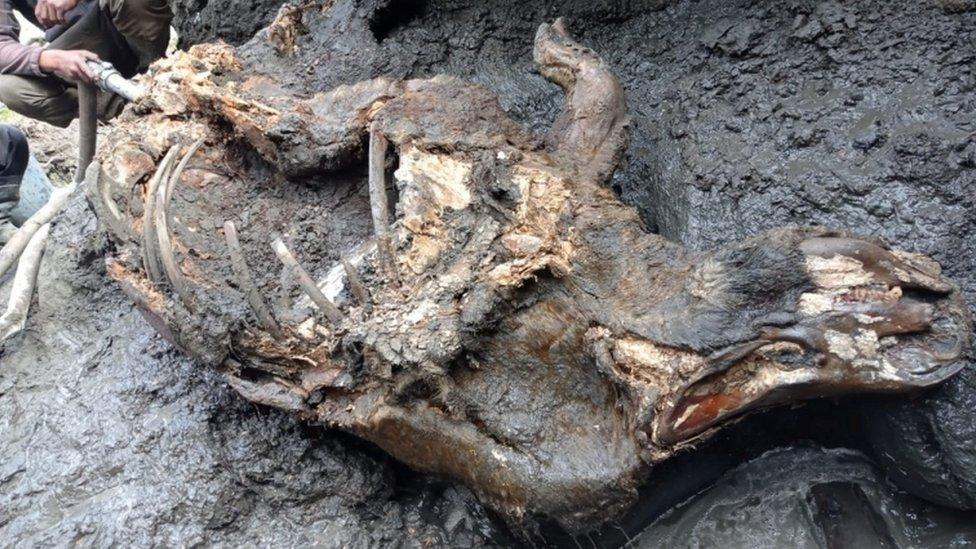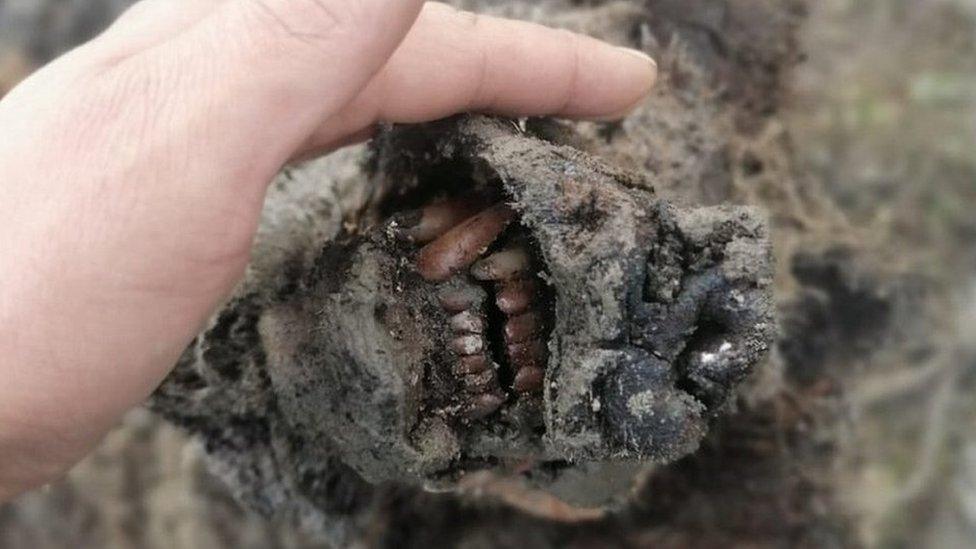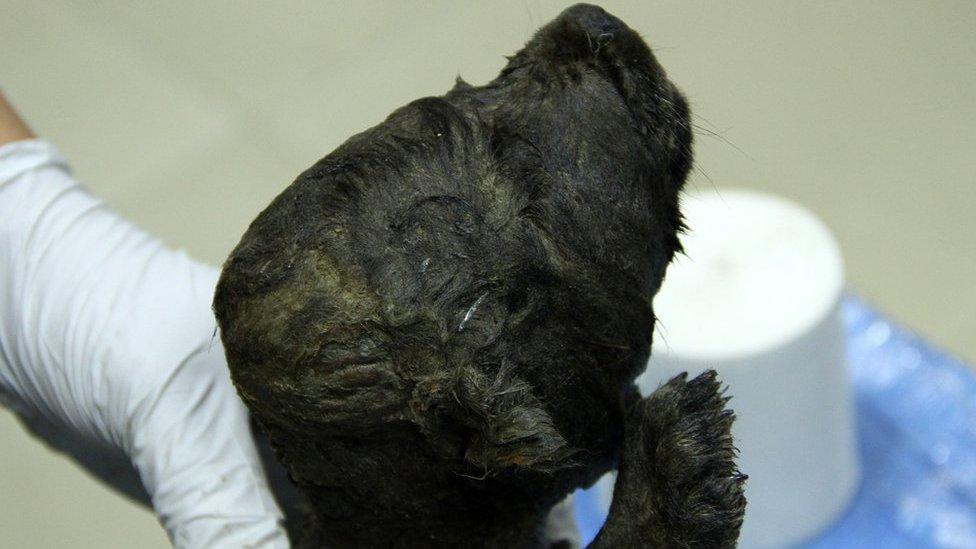Woolly rhino from Ice Age unearthed in Russian Arctic
- Published

The carcass was found by a local resident on the banks of a river in eastern Siberia in August
The remarkably preserved carcass of an Ice Age-era woolly rhino has been unearthed by locals in eastern Siberia, researchers have said.
The rhino was revealed by the melting permafrost in the Abyisky region of Yakutia in north-eastern Russia.
With most of its internal organs intact, the rhino is among the best-preserved animals ever found in the region.
Experts will deliver the rhino to a lab for further studies next month.
They are waiting for ice roads to form so they can take the remains to the city of Yakutsk, where scientists will take samples and carry out radiocarbon analyses.

The rhino is believed to have lived in the late Pleistocene era, anywhere between 20,000 and 50,000 years ago.
Valery Plotnikov, a researcher who examined the remains, told Russian media the rhino was between three and four years old when it died, probably from drowning.
She said much of the rhino's soft tissue was still visible, including part of the intestines and genitals.
"A small nasal horn has also been preserved - this is a rarity, since it decomposes rather quickly," Ms Plotnikov, a palaeontologist with the Russian Academy of Sciences, was quoted as saying by Yakutia 24 TV, external.
There were traces of wear on the horn, suggesting the rhino "was actively using it for food", she said.

The rhino's horn was found next to the carcass

The rhino was first discovered in August by a local resident on the bank of the Tirekhtyakh river.
This is close to the site where another young woolly rhino was recovered in 2014. That rhino, which researchers named Sasha, was estimated to be 34,000 years old.
Recent years have seen major discoveries of the remains of mammoths, woolly rhinos, foal, several puppies and cave-lion cubs in parts of Siberia.
In September researchers said they had found the well-preserved carcass of a bear from the Ice Age on the Lyakhovsky Islands in north-eastern Russia.
Discoveries of this kind are becoming more frequent as global warming melts the permafrost across vast areas of Russia's extreme north and eastern regions.

You may also be interested in:
Neil MacGregor tells the story of a small ivory sculpture, carved 40,000 years ago.
Related topics
- Published15 September 2020

- Published28 November 2019
